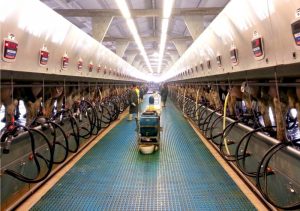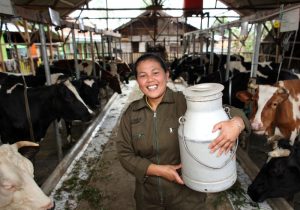Bles Dairies has been active in Asia for a long time. Projects have broadly fallen into three categories: (1) dairy development work, primarily related to training of small dairy farmers, (2) greenfield dairy farming projects for local and foreign investors and (3) advisory work for multinational dairy corporations.
Strong economic growth in many Asian markets has led to strong growth in dairy consumption and strong demand for locally sourced milk. Dairy processors have developed their own mega dairy projects (particularly in China) or focused on development of small holder farmers (primarily in South East Asia). Although there is still much scope for increasing productivity and efficiency at the farm level, production costs remain high. Together with increasingly strict environmental regulation, rising labor cost, water shortages and limited land resources, construction of mega dairies has come to a near standstill in China.
As a result, large processors are increasingly outward looking when it comes to sourcing milk. China’s dairy processors Mengniu and Yili, both already in Rabobank’s top 10 largest dairy companies, lead the way. Bright Dairy and Yili’s investments in New Zealand are probably the best examples. Mengniu and Yili recently participated in the bidding process for Murray Goulburn in Australia. Had either of them succeeded, this would have instantly made them a global player. On the downstream side, processors are interested in acquiring brands abroad, which can potentially be introduced at home. Yili’s attempt to acquire Stonyfield in the US is a good example.
In Southeast Asia, we still see interest in dairy farm investment by both processors as well as individual investors or investment funds. The investment climate in South East Asia is also more favorable. Labor cost or lower and there is more land available with fewer of the ownership limitations that China has. South East Asian economies continue to do well, demand is still growing strongly and retail prices of dairy products are high.

In the Philippines, there is a drive towards greater self-sufficiency (imports currently account for over 95% of consumption) and government support for the establishment of local agricultural production. Macro-economic indicators in Vietnam are strong and demand continues to rise. Self-sufficiency is currently around 35%. A domestic champion (Vinamilk) certainly helps to stimulate both consumption and interest among investors to invest in the sector. Another market where Bles Dairies sees opportunity for further investment in dairy farming is Indonesia. With its large population and relatively low dairy consumption, there is a huge potential.
Over the next few years we will certainly see more interest from Asian dairy companies to acquire assets abroad. This will primarily be related to assets that give them good access to milk production pools. Indeed, we believe the Asian dairy sector has entered a new era with major dairy companies having evolved from large domestic dairy companies to global players taking a much more strategic look at where they need to invest and how to secure the raw milk needed to meet rising consumption.


